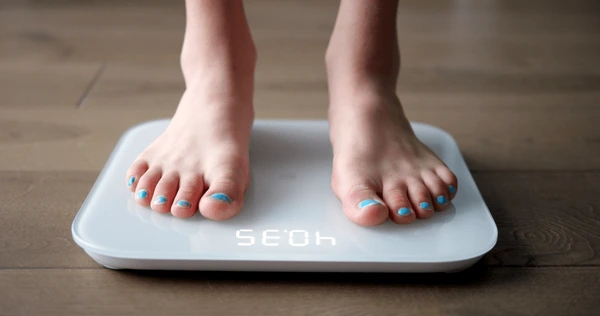BMI for Teens
BMI For Teens
Adolescence is a time of rapid growth and development, and maintaining a healthy weight during this period is crucial for both physical and mental health. Body Mass Index (BMI) is a tool often used to assess whether a teen’s weight is within a healthy range for their height, but understanding how BMI works for teens is different than for adults. Since teens are still growing, their bodies undergo significant changes, which means their BMI should be interpreted with caution.
What is BMI?
BMI (Body Mass Index) is a numerical value that compares an individual’s weight to their height. The formula is the same for teens as it is for adults:
BMI = weight (kg) ÷ height² (m²)

However, while BMI is a good starting point for identifying potential weight-related health risks, it is just one part of the picture. BMI alone does not distinguish between muscle mass, fat, or bone density, which can be especially important during adolescence, when the body is changing rapidly.
Why is BMI Important for Teens?
Monitoring BMI for teens is important for several reasons:
Growth and Development: Teens are still growing, and BMI can help assess if their weight is in a healthy range during this developmental phase. Both underweight and overweight teens can experience growth issues, nutritional deficiencies, or health problems if their weight is not within a healthy range.
Health Risks: Unhealthy weight—whether underweight or overweight—can increase the risk of a variety of health issues. For example:
Underweight teens may face problems such as nutritional deficiencies, low bone density, and weak immune function.
Overweight and obese teens are at greater risk for developing type 2 diabetes, high blood pressure, heart disease, and other metabolic conditions later in life.
Mental and Emotional Health: Teens are particularly vulnerable to body image issues and self-esteem problems. A BMI that indicates an unhealthy weight may contribute to negative feelings about their body, increasing the risk of anxiety, depression, and eating disorders.
Early Intervention: Monitoring BMI during adolescence can help catch potential weight issues early, allowing for lifestyle changes or medical interventions before these issues become more serious.
BMI Percentiles for Teens
BMI percentiles take into account the normal variations in growth that occur during adolescence. For teens, BMI is compared to growth charts developed by the Centers for Disease Control and Prevention (CDC) or the World Health Organization (WHO), which use age and sex-specific percentiles.
Underweight: Below the 5th percentile.
Normal weight: Between the 5th and 85th percentiles.
Overweight: Between the 85th and 95th percentiles.
Obese: Above the 95th percentile.
These percentiles are used to assess where a teen’s BMI falls in relation to their peers, taking into account their stage of growth and development. For example, a 16-year-old male who is taller and more muscular might have a higher BMI than a 16-year-old female, even though both are in a healthy weight range for their gender and age.
Why Percentiles are Used for Teens
Unlike adults, teens’ bodies are still changing, so their height, weight, and BMI will naturally fluctuate. Using percentiles allows for a more accurate assessment of a teen’s growth, providing a better understanding of whether their weight is appropriate for their age, sex, and stage of development.
For example:
A 14-year-old girl might have a BMI that places her in the 80th percentile, which is considered healthy.
A 14-year-old boy with a similar BMI may fall in a different percentile range due to differences in body composition and growth patterns between males and females.
BMI and Puberty
Puberty is a key factor when it comes to interpreting BMI in teens. During this time, significant physical changes occur, including:
Growth Spurts: Height increases rapidly, and weight also changes, often leading to temporary fluctuations in BMI.
Muscle and Fat Distribution: Boys tend to gain muscle mass, while girls typically gain fat in areas like the hips and thighs due to hormonal changes. These changes may influence BMI but are not necessarily an indication of unhealthy weight.
Hormonal Fluctuations: Puberty-related hormones, such as estrogen and testosterone, affect how the body stores fat, builds muscle, and retains water, all of which can impact BMI.
It’s important to note that during puberty, some weight gain is normal and healthy, and weight fluctuations may not necessarily be a cause for concern. Teens going through puberty should be closely monitored for overall health, rather than just focusing on their BMI alone.
Challenges of Using BMI for Teens
While BMI is a helpful tool, it has limitations, especially for teens:
Growth and Development Variations: As mentioned, adolescents go through growth spurts, which can cause temporary increases in weight and changes in body composition. These natural fluctuations might not always align with BMI categories.
Body Composition: BMI does not distinguish between lean body mass (muscle, bone) and fat mass. Teens who are athletic or muscular may have a high BMI, even though they have low body fat. Similarly, teens with a lower BMI may still have a high body fat percentage, especially if they are not active.
Cultural and Socioeconomic Factors: The interpretation of BMI can vary across cultures and socioeconomic backgrounds. Factors like diet, physical activity, and access to healthcare can influence a teen’s growth and body composition.

How to Help Teens Maintain a Healthy BMI
Maintaining a healthy BMI involves more than just keeping weight in a specific range. A healthy lifestyle is key, and it’s important to focus on overall health, rather than BMI alone. Here are a few tips for helping teens achieve and maintain a healthy weight:
Encourage a Balanced Diet:
Ensure a diet rich in fruits, vegetables, whole grains, and lean proteins. Encourage healthy eating habits, but avoid excessive focus on “dieting,” which can negatively impact body image.
Promote Physical Activity:
Regular physical activity is crucial for maintaining a healthy weight. Aim for at least 60 minutes of moderate to vigorous activity most days of the week, such as sports, walking, cycling, or dancing.
Limit Screen Time:
Excessive screen time, such as watching TV or using smartphones and computers, is associated with a sedentary lifestyle and weight gain. Encourage teens to engage in physical activities and limit screen time to no more than 2 hours per day.
Encourage Healthy Sleep Habits:
Adequate sleep is essential for healthy growth and development. Teens need around 8-10 hours of sleep per night for optimal health, as poor sleep is linked to weight gain, hormonal imbalance, and mood disorders.
Foster Positive Body Image:
Encourage teens to focus on strength, health, and fitness rather than just appearance. Avoid making comments about weight or BMI and emphasize overall well-being.
Provide Emotional Support:
Teens may struggle with self-esteem and body image issues. Be supportive and offer guidance if your teen shows signs of disordered eating, low self-esteem, or emotional distress related to their weight or body image.
When to Seek Professional Help
If a teen’s BMI falls in the underweight or obese categories, it may be important to seek guidance from a healthcare professional. An endocrinologist, pediatrician, or dietitian can help assess their growth patterns, nutritional needs, and potential underlying health conditions.
Additionally, if a teen is struggling with body image issues, eating disorders, or mental health concerns related to weight, it’s important to seek support from a counselor or therapist specializing in adolescent health.
Conclusion: BMI as a Tool for Teen Health
BMI can be a useful tool for monitoring teen health, but it should always be considered alongside other factors such as body composition, physical activity, and emotional well-being. During adolescence, the body is changing rapidly, and BMI alone may not always reflect the complexities of growth and development.
Supporting teens with a balanced diet, regular physical activity, good sleep, and positive body image is key to maintaining a healthy BMI and promoting overall health. It’s also important to be mindful of the psychological effects of focusing too much on BMI, and instead focus on long-term wellness and self-confidence.
Check Your BMI Instantly – It's Free
Calculate your Body Mass Index in seconds using our powerful online BMI calculator. Know your health status and take control today — no sign-up required!